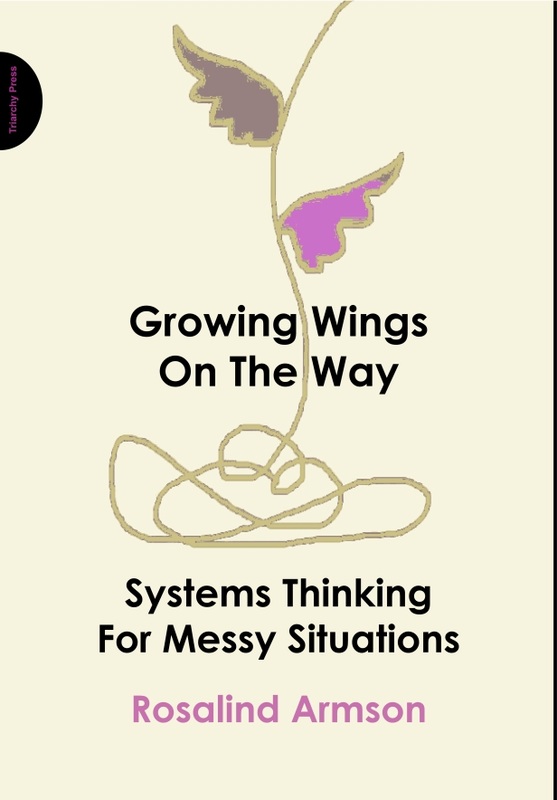Mental Traps
… but they shall be snares and traps unto you, and scourges in your sides, and thorns in your eyes
Joshua 23. 13 Sir Geoffrey Vickers (1894 – 1982) gave a lot of thought to the traps humans get stuck in. He noticed that the design of lobster pots corresponds to the characteristics of lobsters. The traditional ‘inkwell’ lobster pot has a central steep-sided hole at the top ending in a drop into the basket. The lobster pot is baited with mackerel or salted white fish. The omnivorous lobster smells the tasty bait and finds the hole by climbing the wicker sides of the pot. It makes its way through the hole and drops into the pot where it consumes the bait. The lobster pot exploits the lobster’s characteristics and behaviour – walking along the sea floor, finding food, and its liking for particular fishy foodstuffs. It is easy for the lobster to get into the pot but its curved chitin carapace bends in the wrong direction for getting out. The inkwell lobsterpot is an openwork wicker basket approximately 50 cm high and 75 cm across. It has a strong base that rests on the sea floor, weighted by stones. At the top is a steep-sided funnel that narrows from about 20 cm to 15 cm and is approximately 15 cm long. A strong but light rope, supported by cork floats, allows recovery. Lobsters get trapped by being lobsters. The lobster’s back, which has many advantages for the lobster, is as much a vulnerability as its need to eat, when it is confronted by a baited lobsterpot. Vickers observed that humans become trapped not because they are ignorant or stupid but by their particular human characteristics, including the things they are good at. Human vulnerability to trapped thinking arises from the way we think and, often, from the very things we excel at. ‘Trap’ is an illuminating metaphor, often expressed spontaneously when options seem limited. In this chapter, I want to explore the idea of mental traps, how they work and, more importantly, how to avoid and escape them. I also want to explore how being trapped can be as much about my own characteristics as it is about the messy situation I am facing. In exploring this metaphor, and the experience of being ‘trapped’ or ‘stuck’, I find everyone’s thinking is potentially vulnerable to traps, that messy situations often conceal traps and that getting stuck is part of the experience of messy situations. Humans have some significant advantages over lobsters. Humans can learn to recognise their thinking has become trapped and then to work out how to escape. Better still, they can learn to recognise traps and avoid them. Messes set traps for those who chose to engage with them. They are a feature of the complexity I experience. Every potential escape route seems to run into uncertainty, lack of resources, other people’s unwillingness and so on. This is in the nature of messy situations. It seems wise to acknowledge that I may be trapped. Even if all my options are blocked, I can explore the possibility – indeed I can make the provisional assumption – that by changing my thinking I can escape from the trap. A lobster cannot change its shape but, as a human, I can change my thinking. By changing how I think about the mess, I regain my ability to make progress. This is a strong claim so I invite you to suspend disbelief for a while to see if this strategy – thinking about your thinking – offers a way forward. Clarifying your thinking makes new options for action evident. In his cult classic Zen and the Art of Motorcycle Maintenance, Robert Pirsig distinguishes between traps set by the environment and traps set by ourselves. However, it seems to me that escaping a trap is more important than how it was set, so in this chapter I identify some traps that seem to lie in wait for those who dare to engage with messy situations and I offer some ideas for escaping and avoiding them. The diagram assembles these traps. History traps
Individuals and organisations are vulnerable to getting trapped by their history. Our individual and collective histories embed ideas and assumptions that may have been valid for different times and different circumstances but trap our thinking if they remain unchallenged. The trick is to learn from the traps we have fallen into. The sayings and beliefs of families, teachers and friends who formed our own core beliefs, the things we have learned ourselves and the solutions that worked before – all may be traps in the adult circumstances of a decade or two later. When I was young, I lived in a series of cheap apartments and quickly picked up home-improvement skills to better my circumstances. Now, I often assume I will do home-improvements myself, even when getting a professional to do it would be better and more efficient. I even limit my perception of what is possible. In recent family discussions about a new kitchen, I found myself considering only minor improvements that I could complete in a few weekends. Once I spotted that professional builders were an option, I came up with a much better solution, relocating the kitchen to another part of the house. Choices that worked well when I was an impoverished student – and still work well for minor repairs and improvements – work less well when I have other options, a busy work schedule and a family. I get trapped by my history. More seriously, family and other relationships become traps when we fail to account for the processes of growing up and aging. For example, Florence’s parents talk to her as if she were a child, castigating her for her ‘immature attitude’, even though she is in her mid-30s. But it is hard to demonstrate a mature attitude if you are treated as a child. Resentment is inevitable in such a trap. The assumptions they made about Florence twenty years ago now trap her parents too. Assumptions that no longer apply undermine a satisfactory adult relationship. A response to feeling trapped in a messy situation is to ask, ‘What have I learned in the past that may be limiting my thinking?’ and ‘What am I assuming?’ Organisations also fall into history traps. A new high school was just completing its fourth year of operation. Each year, with each new intake of students, the staff complement had been increased until faculty numbered around 50. The principal, a talented leader who had inspired the high standards and caring ethos of the school, became concerned that she was ‘out of the loop’ and people were not telling her things she felt she should know. There were growing resentments in the staff room, particularly directed at new staff. Those who had been around when the school started, including the principal, had enjoyed the intimacy of a small faculty and the pioneering spirit that had inspired them in the first year. They were trapped by memories of their collective past and were struggling to accept that growth and maturity required new ways of doing things, a new leadership style and openness to new staff and their ideas. Other traps are described in detail in the book. They include:
|
More about the book:
Book Homepage
Buy the book Diagrams/Images from the Book Tools & Techniques (Extracted from the book): Rich Pictures Mental Traps Diagrams Complexity Identifying Themes Snappy Systems System Definitions Systems Thinking Skills (Extracted from the book): Enthusiasm Humility Respect Further Resources The Author Author video Read the Introduction Related Titles: The Search for Leadership |

